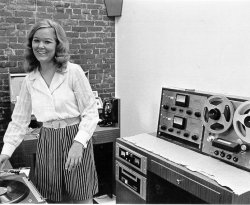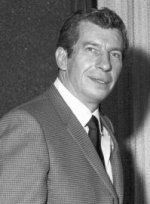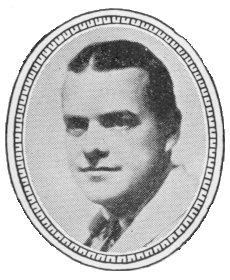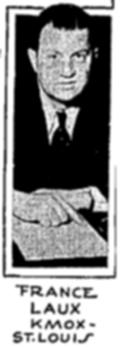Radio Articles
Joan Colgrove – A One-Woman Show
When Joan Colgrove took a job at KACO in the late 1960s, she didn’t mind the fact that she was the station’s only employee. She changed her mind the day the building caught fire and she was trapped inside.
KACO was a blip on the FM dial at the time. It was owned by Apollo Radio Corporation, which was based in Houston. As she remembers it, the company hired her to manage the offices, which were located along with the studios on the second floor of a three-story building in Gaslight Square. The area had suffered its big decline, and about the only business left on that block of Boyle was O’Connell’s Restaurant across the street.
There are a lot of questions surrounding Apollo’s operation here. The company had begun seeking an FM frequency in 1963 with plans to put studios in the Continental Building. By 1967 the company was seeking a studio site in a trailer in Crestwood adjacent to the KSHE studios, but that town’s board of aldermen turned down the request. Apollo had told the F.C.C. that it would be programming classical music, but when it finally got on the air, the music was MOR, which is the industry term for middle-of-the-road.
There was also the problem of KACO’s broadcast day. Because it had only one employee, Joan Colgrove, the station was on the air for only a small portion of the day. She’d been hired to answer the phones “if they ever rang” and pick up the mail. The company told her it was trying to sell the station so it had gotten a special ruling from the F.C.C. allowing it to broadcast only 36 hours a week.

Joan Colgrove in KACO studio
“The people from Houston would make periodic trips to St. Louis,” Colgrove says, “And on one trip they told me ‘We’ve decided it’s silly to hire a deejay. Anyone, even a chimpanzee, can operate a radio station. Joan, here’s the book. Study it and get your license.’ So I did.
“Then came the day when they came in from Houston and sat me down at the board. We had an Ampex tape machine in the studio, and a tape would play for 45 minutes. There were three turntables for records, and I’d use the tape when I had to use the restroom or go across to O’Connell’s to get something to eat.”
What she wasn’t aware of was the fact that the F.C.C. was putting pressure on Apollo. The Commission threatened the company with a $1,000 fine because it had not adhered to its promise to play classical music. In addition the Commission questioned the short broadcast day.
Colgrove only knew what she was told to do and she did it.
“I used to come in at 10 in the morning, unlock the door and flip the transmitter switch. I’d check the meters and start playing music. The transmitter was on deBalliviere at the KCFM tower.
I seldom had a problem, except that I was so totally tied to this, and there was no one there to relieve me. The people in Houston told me I was doing very well. ‘Why don’t you get creative? Start running public service announcements. If you want to talk and introduce a record, do whatever you want to do.’ Up until then I’d only opened the microphone to give the station ID.”
It was, for all intents and purposes, a station that went on the air only to play music. There were no advertisements. It appears, in retrospect, that Apollo simply wanted to keep the signal active until it could find a buyer for the FM slot at 107.7.
“Occasionally a couple of the guys who worked as disc jockeys at KSHE would come up to the studios because we had such good equipment compared to theirs. Gary Bennett and Steve Rosen even backed me up once in awhile when I needed a break from my airshift.”
Then came the fire. Colgrove says: “Our engineer, the man who was supposed to monitor our signal, was never at the station. One day he called me and said there was nothing on the air. I knew something was wrong because my meters weren’t working. When he didn’t call back, I picked up the phone to call him and the phone was dead. I went to the reception area and smelled smoke. The door to the main second floor corridor was hot. So I went to the window and opened it. It was about 10:30 in the morning in February and no one was out of the street.
“I was in a panic. I figured I was going to have to jump or find another way out. I went to the front door and got down on my knees because there was so much smoke. I knew there was a large room on my floor that had a window in the back that opened onto a first floor roof. But when I got to the door it had been nailed shout. I pounded and pulled and finally got the door open, but when I got to the roof it was covered with ice, but there was a fire escape about five feet from the roof’s edge.
“I started yelling for help and finally a man walking through the alley saw me. He called the fire department and came back, climbed the fire escape and helped me across the gap.”
This was the first fire at the radio station. After damages were repaired Colgrove went back to work, but a second fire destroyed everything.
“Apollo kept paying me, even though we weren’t on the air.” But the company had finally found a buyer. In July of 1970, Intermedia, Inc., of Kansas City announced plans to purchase the frequency, which had been renamed KGRV, with studios at 1215 Cole. The MOR signal gave way to “music for groovy adults.” As for Joan Colgrove, she made the switch to KGRV for awhile, taking to the airwaves as “Kay Groove.”
She later designed restaurant interiors. Among her credits: the old KSHE Café.
(Reprinted with permission of the St. Louis Journalism Review. Originally published 4/1999).


